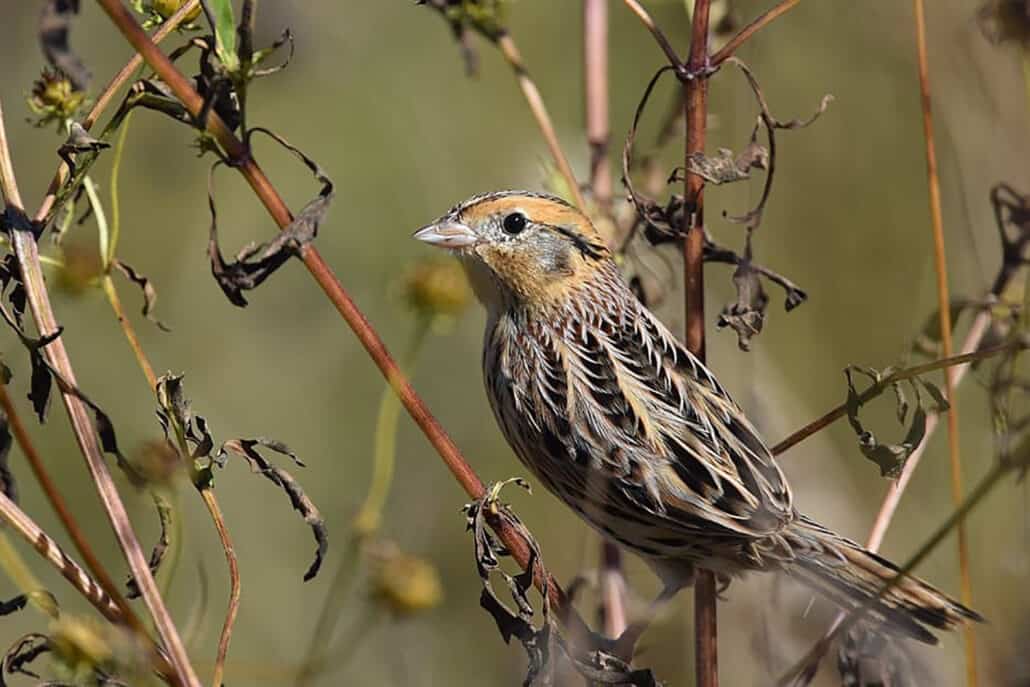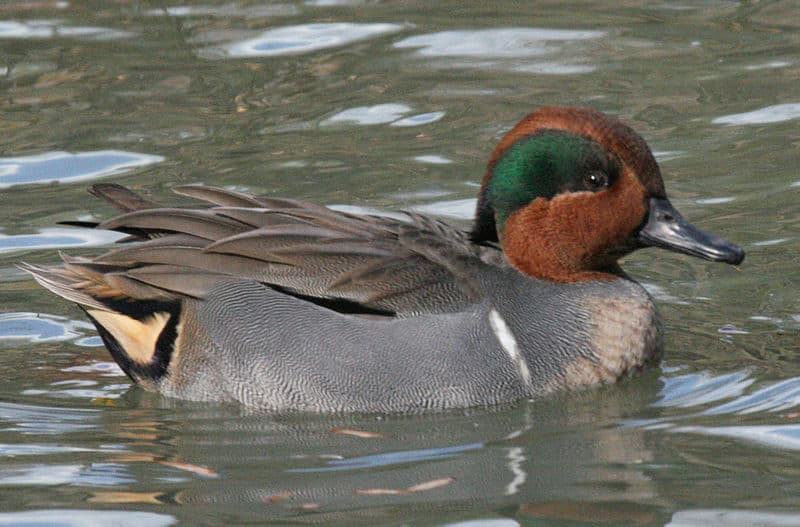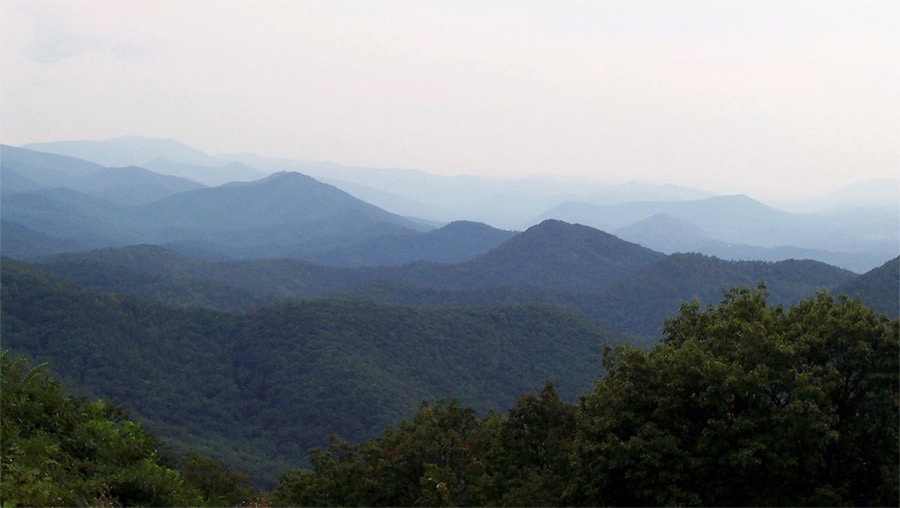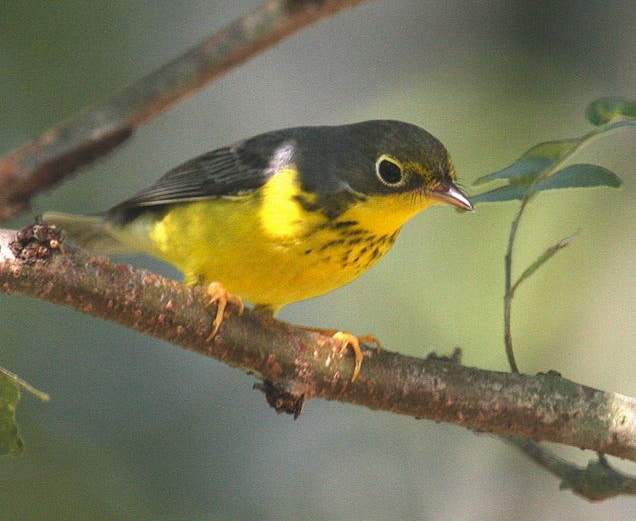Every spring, about two thousand volunteers spread out across North America to count birds for the government. The Canadian Wildlife Service and the U.S. Fish and Wildlife Service sponsor a joint breeding bird survey. Data collected is added to a continentwide, longitudinal database. The information is studied to determine what is happening to bird populations, with the results also indicating how the environment in general is faring.
For censusing purposes, the continent is divided into areas one degree of longitude wide and one degree of latitude north to south. Within this “latilong” block 24.5-mile routes are assigned to individual census takers. In sparsely populated areas in the West a latilong may have only one census taker available and only one designated route.
Starting one half hour before sunrise, the birder stops every half mile along the assigned route (50 stops) and looks and listens for three minutes to identify every species and to count the number of individuals of each. The temperature, wind velocity, and weather are all recorded at the beginning and end of the “bird run.” If there is rain or strong wind the count must he postponed, for when the birds can’t be heard they can’t be recorded.
Each year the information accumulated becomes more meaningful, especially if, as is ideal, the same observer follows up year after year. This is a challenging exercise, for one must recognize every bird by song or sight without hesitation and push on to the next stop to finish promptly, since most birds quit singing by 9 a.m. A report where most birds were missed would be of little value.
My wife and I have been fortunate to conduct several of these spring censuses through the years. All of these have been interesting, more so if the route traveled takes us through varied habitat. Our favorite North Dakota breeding bird census is Dunn Center, located between 102 and 103 degrees west longitude and 47 and 48 degrees north latitude.
So that we will be in position to start counting at 5:22 a.m., we camp at the beginning of the route at the end of a dirt road over the hill from the Little Missouri River. Here we are out of sight from any farm, out of hearing from any traffic, out of smell from anything but prairie flowers.
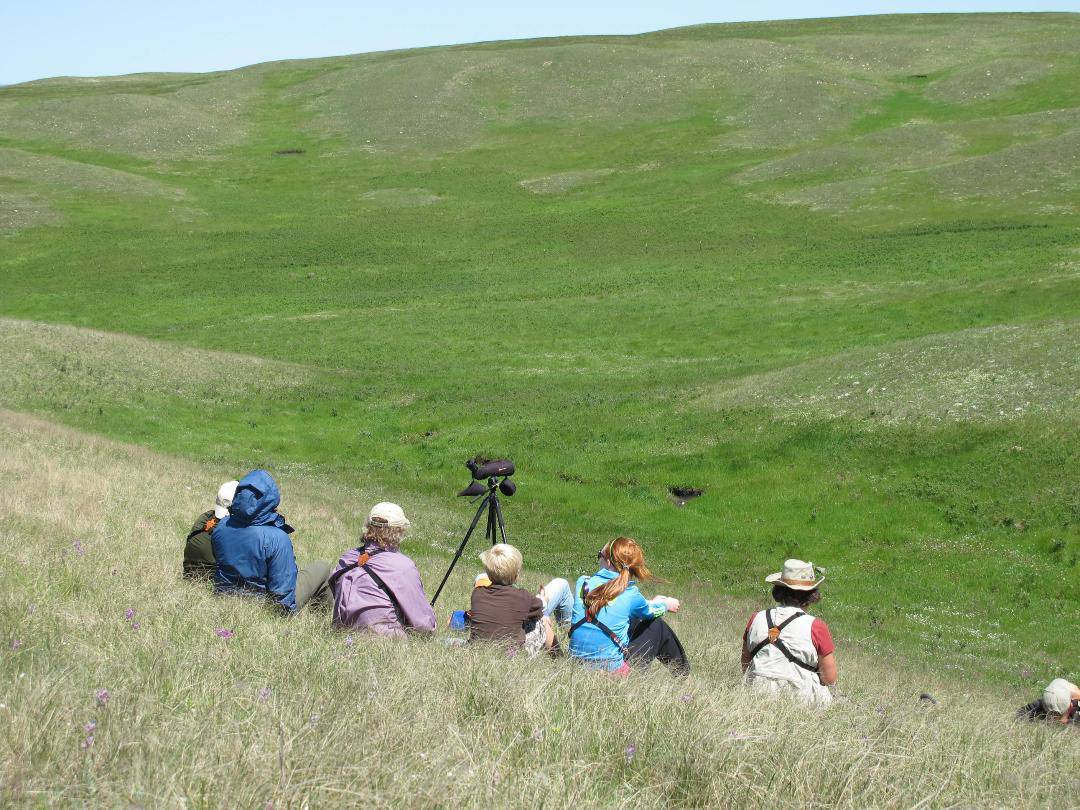
The serene beauty of the native prairie stretches to the horizon in all directions. To the west the setting sun silhouettes the Killdeer Mountains (yes, North Dakota has mountains—a well-kept secret!). The utter silence is broken only by songs of the western meadowlark, bobolink, vesper sparrow, grasshopper sparrow, lark sparrow—and an occasional lowing steer.
Some years a house wren has taken up residence in a nearby corral. As night falls coyotes sing us a lullaby. But one year a nearby rancher rode up on his motorcycle to find out what we were doing there. He was nonplussed to hear we had been doing this bird count for several years, and mollified when we dropped the names of a couple of neighbors with whom we were acquainted. Because of cattle rustling, we understood his concern over seeing us, although I don’t visualize how we could squeeze a cow or even a calf into our camper van.
The next morning a half hour before dawn we spend three minutes reviewing the songs of the birds that are waking up with us. The long-billed curlew has been heard here, but it is too early in the day for it to call yet. Then we start down the road to cross a ravine with green ash trees and Juneberry bushes, sheltering ring-necked pheasants, mourning doves, nighthawks, robins, yellowthroats, lazuli buntings, rufous-sided towhees, chipping sparrows, red-eyed vireos, warbling vireos, and yellow-breasted chats.
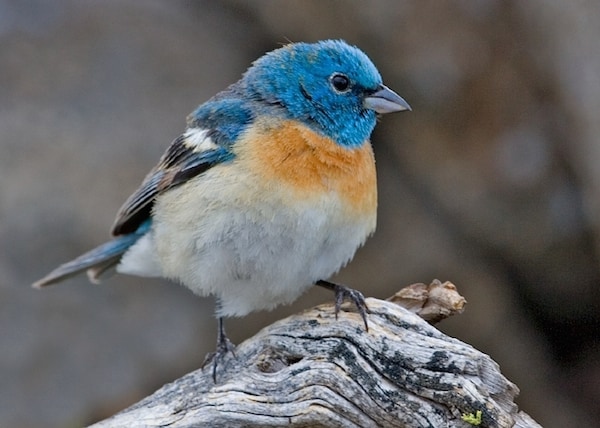
Oil exploration motivated improving the next stretch of dirt road with a covering of scoria (from nearby deposits of clay baked hard and red by heat from a prehistoric fire that had burned an underlying bed of lignite coal). One year the oil well drillers had set up a camp right on the section line road, so we used the bypass they had provided in and out of a pasture.
Starting at a corner where there used to be a one-room schoolhouse, the rest of the route is over a gravel road. We add to our list the great horned owl, short-eared owl, black-billed magpie, yellow-headed blackbird, red-winged blackbird, brown-headed cowbird, American goldfinch, eastern kingbird, Le Conte’s sparrow, and field sparrow.
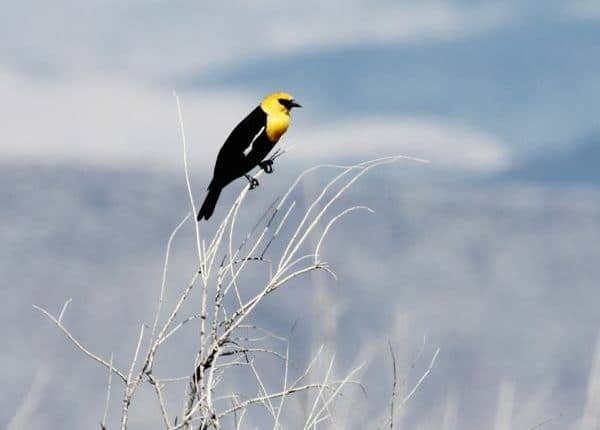
Some years it is cold enough to see my breath as I talk or exhale. I laughed when I saw a bird’s breath too—a tiny cloud issuing from its open bill as it sang! One year we did our count the morning after a tornado had passed through. A strong wind was blowing patches of cloud along the ground, like a speeding fog bank. But the birds did not seem affected by the storm.
The ponds we pass reveal pintails soras, coots, bitterns, mallards, both blue-winged and green-winged teal, wigeon, shovelers, canvasbacks, redheads, and ruddy ducks. As the years go by, these ponds, or prairie potholes, and marshes slowly change into meadows to provide habitat for the bobolink, killdeer, horned lark, lark bunting, Savannah sparrow, chestnut-collared longspur, and Baird’s sparrow.
By now so many birds are singing I am at my wit’s end to miss as few as possible from the chorus of songs, while my wife carefully records them on the data sheet as I call them out in rapid succession. Now the route takes us through the small town of Dunn Center. Here we add the rock dove, flicker, western kingbird, cliff swallow, brown thrasher, starling, yellow warbler, house sparrow, orchard oriole, northern oriole, Brewer’s blackbird, and clay-colored sparrow.
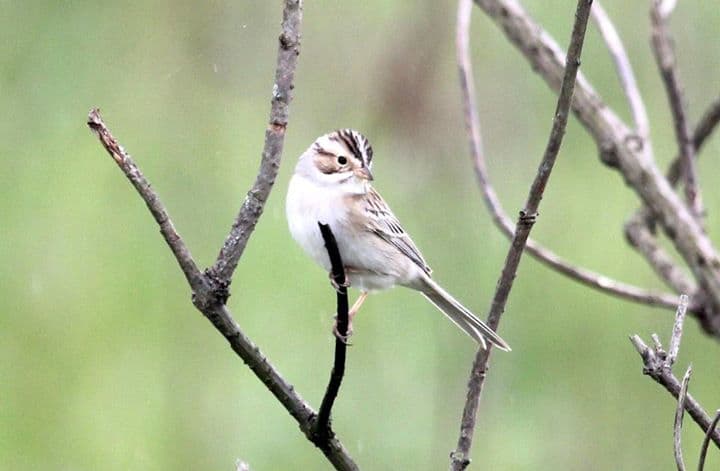
We cross the creek that drains Lake Ilo and climb a hill, hearing more western meadowlarks, horned larks, lark buntings, pheasants, and mourning doves. At the top of the hill a farmyard has offered a pair of shrikes for a few years. The aggressive nature of these birds is exceeded by the farmer’s antisocial dog, so we park at a discreet distance, judged by the dog to be just outside his domain, and wish the three minutes away.
Lake Ilo National Wildlife Refuge, which we pass, offers a lake and marsh sheltering many ducks, as well as the black tern, marsh wren, Say’s phoebe, least flycatcher, and a colony of yellow-headed blackbirds.
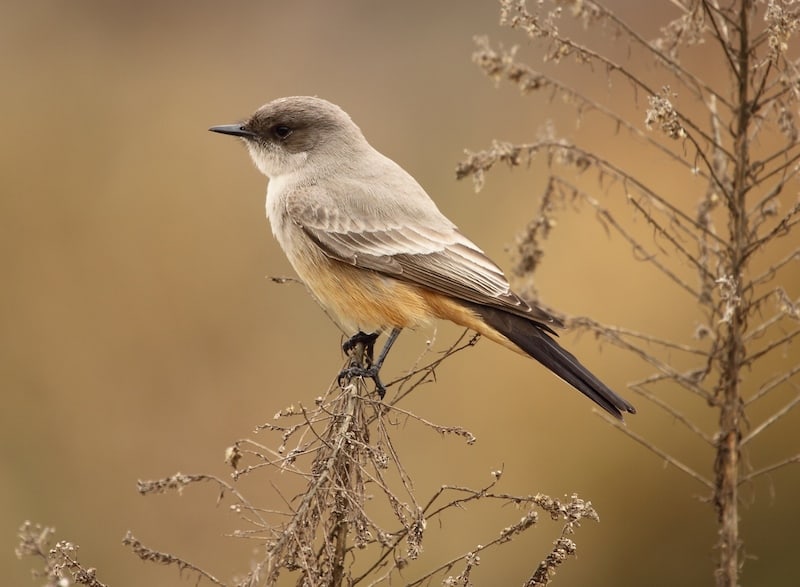
At the top of another hill, bleak and forlorn and far from any farmhouse or ranch house, stands a telephone transmission tower. To my surprise it always offers nesting house sparrows. The upland sandpiper, northern harrier, red-tailed hawk, Swainson’s hawk, kestrel, sharp-tailed grouse, gray partridge, and common snipe show themselves along the road through the prairie.
The original prairie, miles of rolling grasslands with trees only in scattered coulees, now has changed into pastures and plowed fields interspersed with farmyards and shelterbelts. The shelterbelts consist of rows of trees planted to provide shelter from the wind incidentally also provide shelter for those birds that prefer woods for cover.
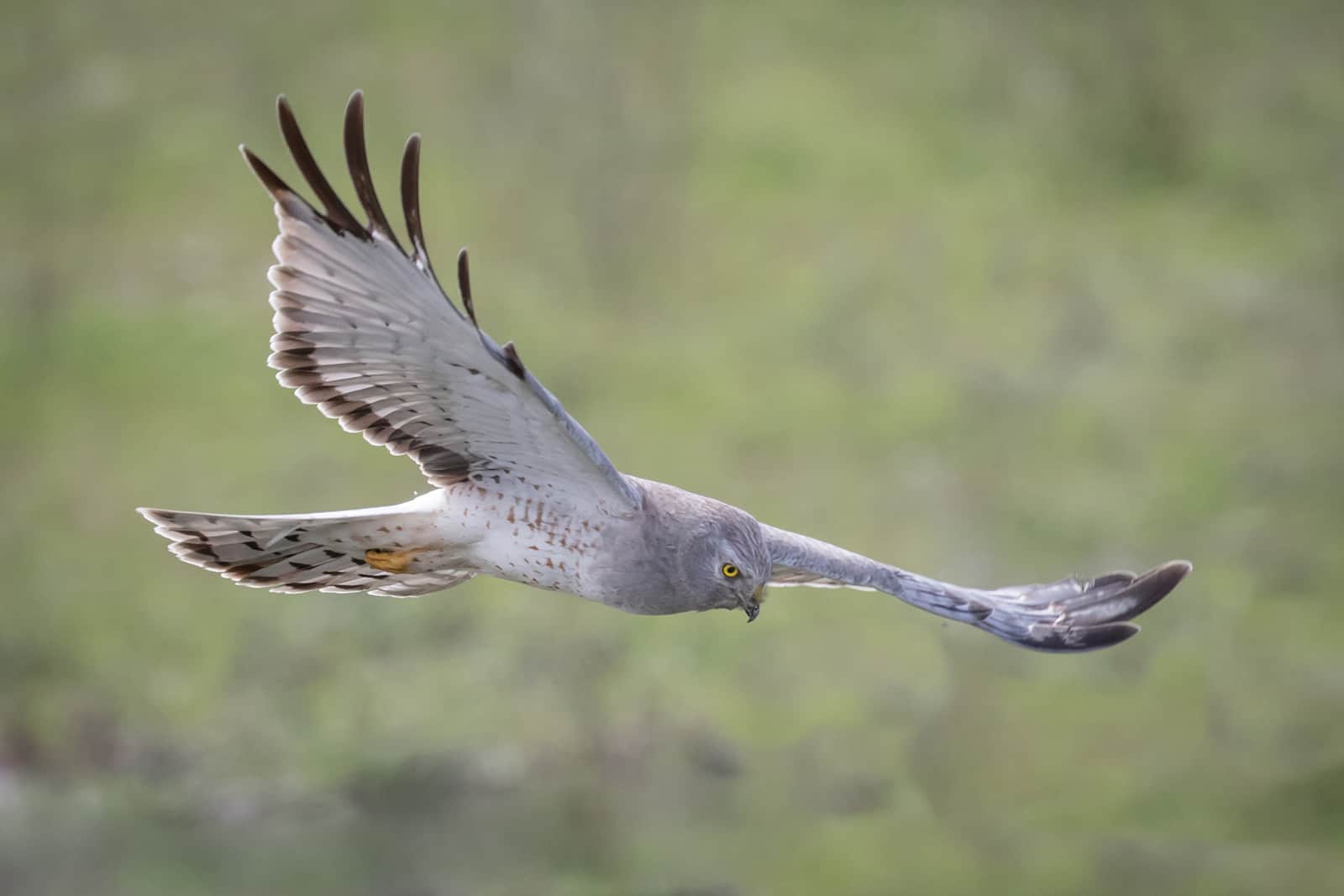
On one of our bird runs once, a character came walking down the road with a revolver protruding from a holster he was wearing on his hips. The directions for the survey state that it is permissible to wait a moment if traffic is too heavy, so I waited in our vehicle until the “traffic” walked out of shooting range.
Since it is a bird census we’re taking, we record neither the family of red foxes we see, nor the deer and the antelope who really do play on the range as the song claims, nor the ground squirrels who give North Dakota its nickname, Flickertail State, and who provide food for the hawks. We note that the hawk spreads its tail over the ground; the cornered rodent instinctively hides in the shadow of the tail, which makes it easy for the hawk to dispatch its prey.
The prairie now is crisscrossed by barbed-wire fences. Humans climb the fence; deer jump over the fence; antelope crawl under it. The buffalo or bison would bulldoze through the fence if it had a mind to, so the rancher who decides to raise bison must keep them contented to stay within the fence. Any bison we meet outside a fence we treat with great respect, since it is capable of knocking a car over.
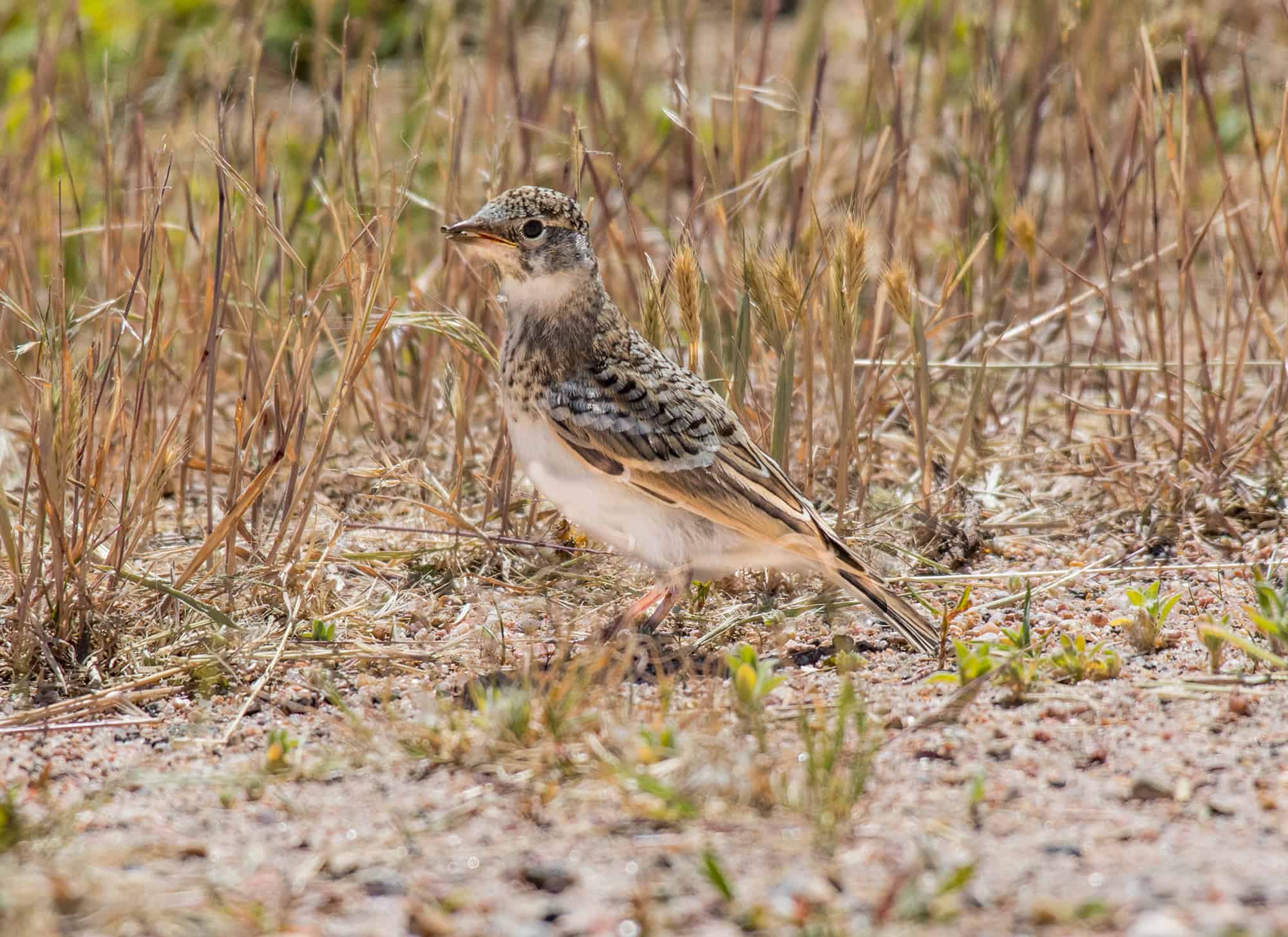
The prairie falcon, burrowing owl, tree swallow, barn swallow, rough-winged swallow, bank swallow, Sprague’s pipit, willow flycatcher, catbird, and song sparrow round out our list of species as we finish the last few stops. Of course, we do not find every species every year.
On the other hand, some have been heard consistently at more than half of the 50 stops—these are ring-necked pheasants, mourning doves, horned larks, red-winged blackbirds, lark buntings, and western meadowlarks.
The meadowlark, North Dakota’s state bird, faithfully shows up at 49 of all 50 stops! As to the numbers of individuals recorded, of the most abundant species the western meadowlark averages about 400; the lark bunting 130, the red-winged blackbird 100, and the horned lark and yellow-headed black bird each almost 100.
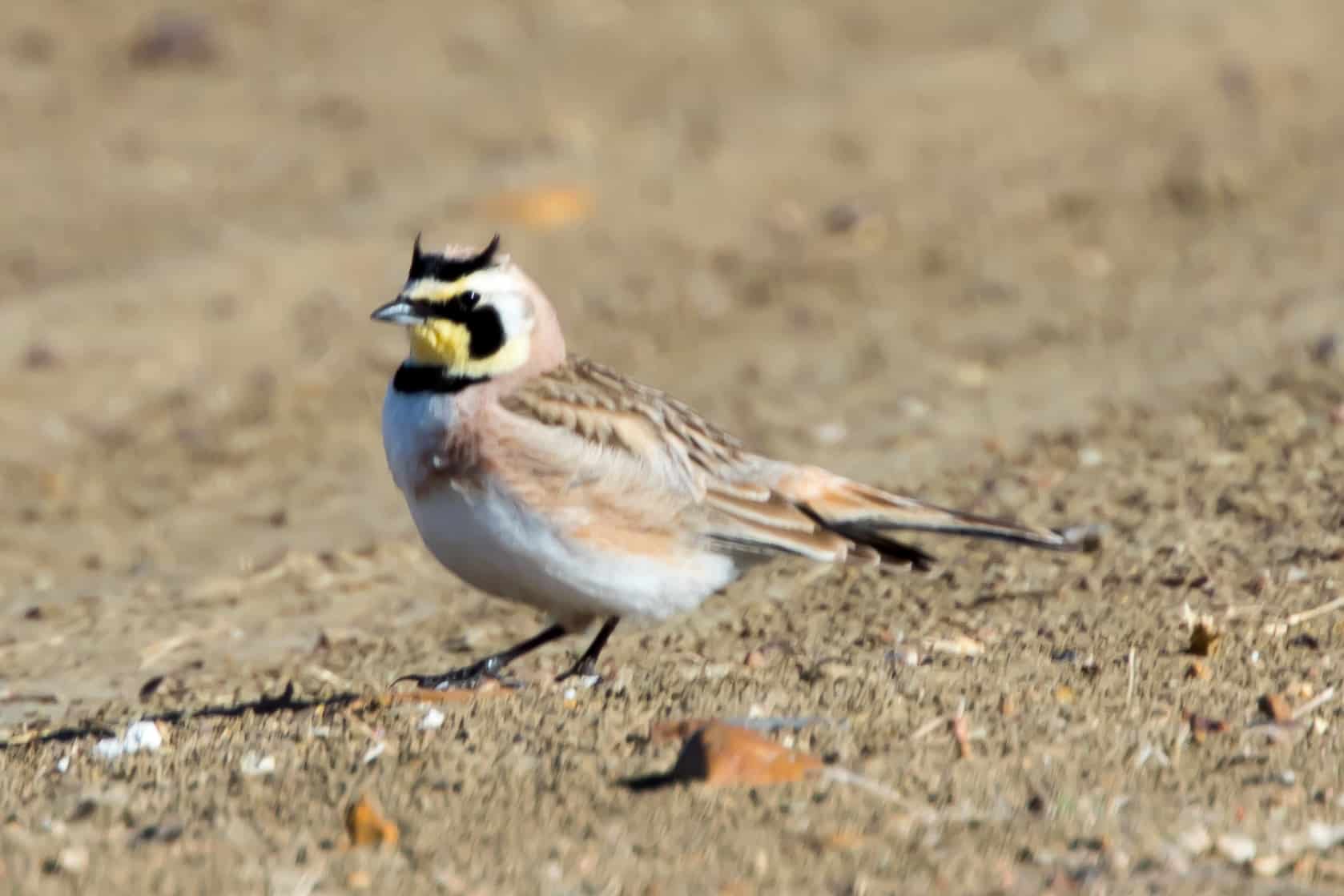
Traffic is no problem, for the number of cars encountered along the entire 25 miles of the route can he counted on the fingers of one hand. The typical vehicle is a scruffy pickup truck with a rifle hanging across the rear window, driven by a farmer-rancher wearing Levi’s, a work shirt, dirty cowboy boots, and a souvenir cap from a farm implement dealer. It is 9 a.m. as we finish with a sigh of relief.
Fifty stops are enough, thank you, although we enjoyed every minute. So, we record our final observations of wind, sky, and temperature, then drive back to the state highway that passes through Dunn Center, grateful to get off the dusty—or muddy—gravel road.
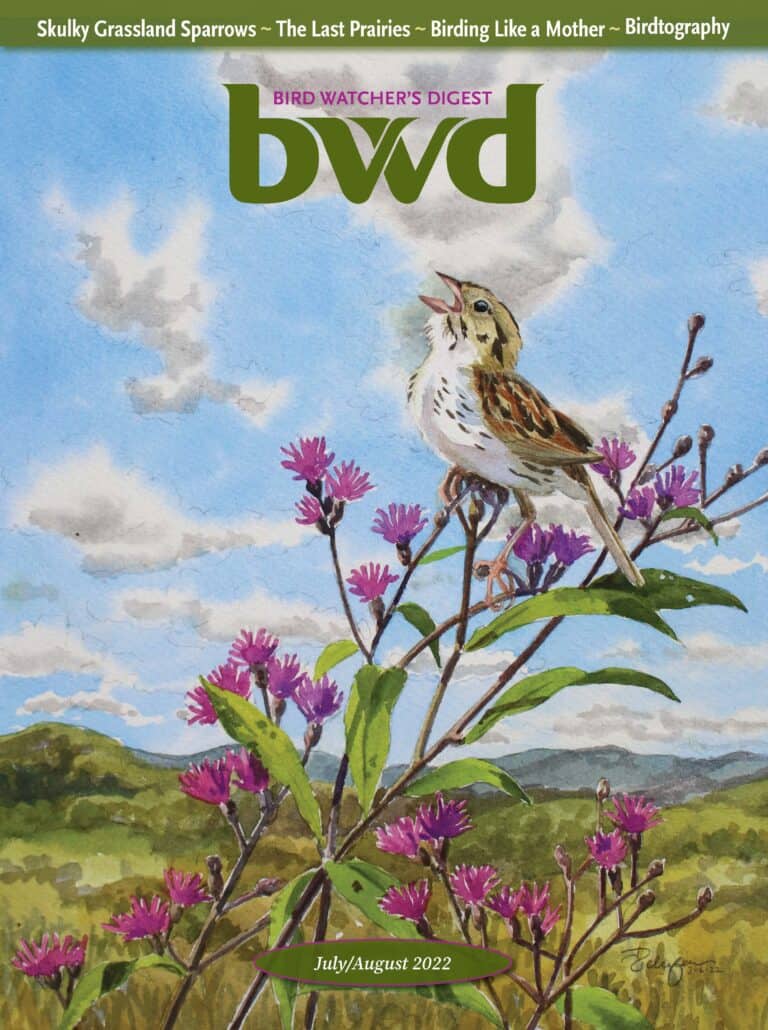
Looking to Subscribe?
Get 6 print issues of the magazine delivered to your door & free digital access
One Year Print Subscription: $26
(to US or Canada, includes digital access)
One Year Digital-only Subscription: $15

